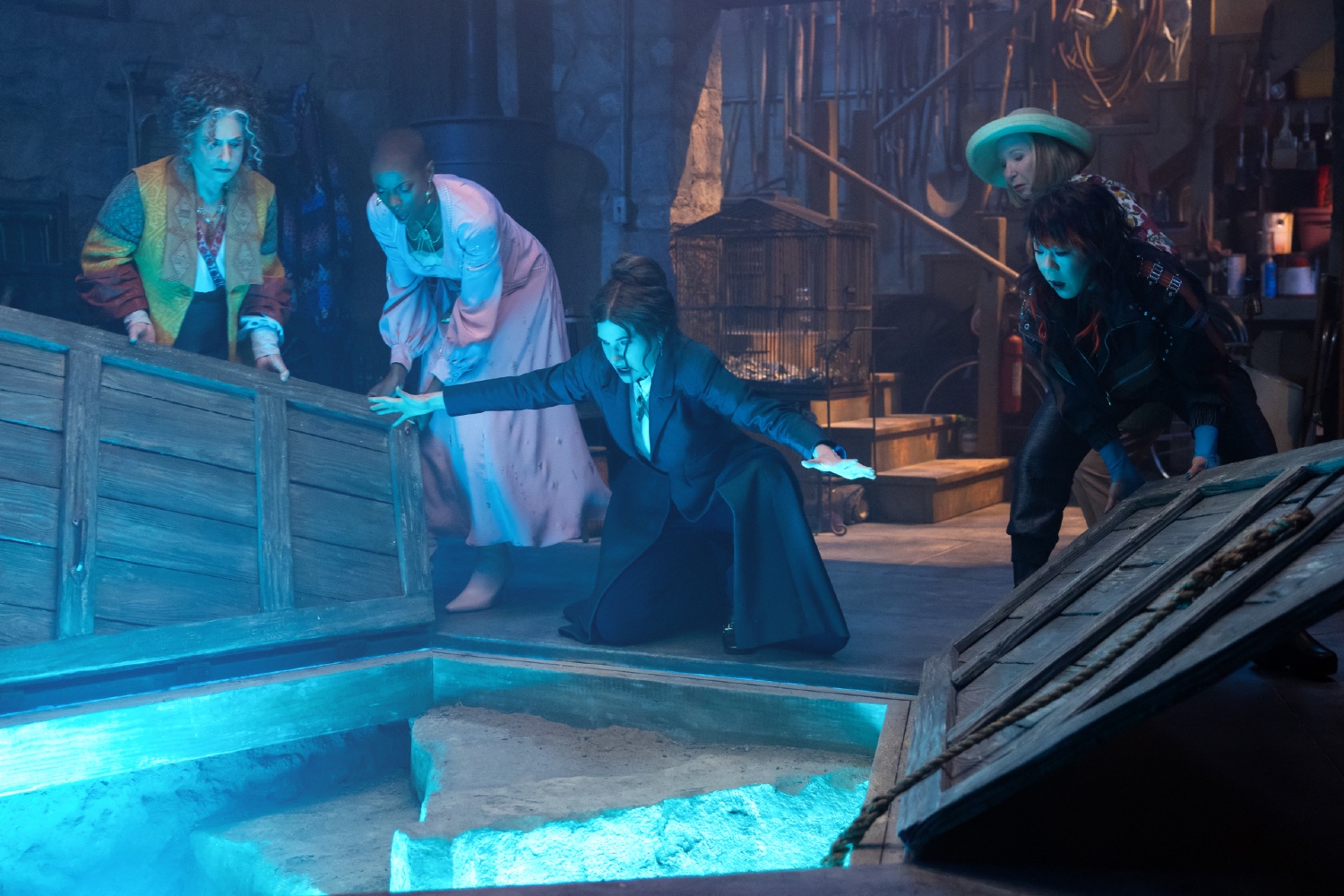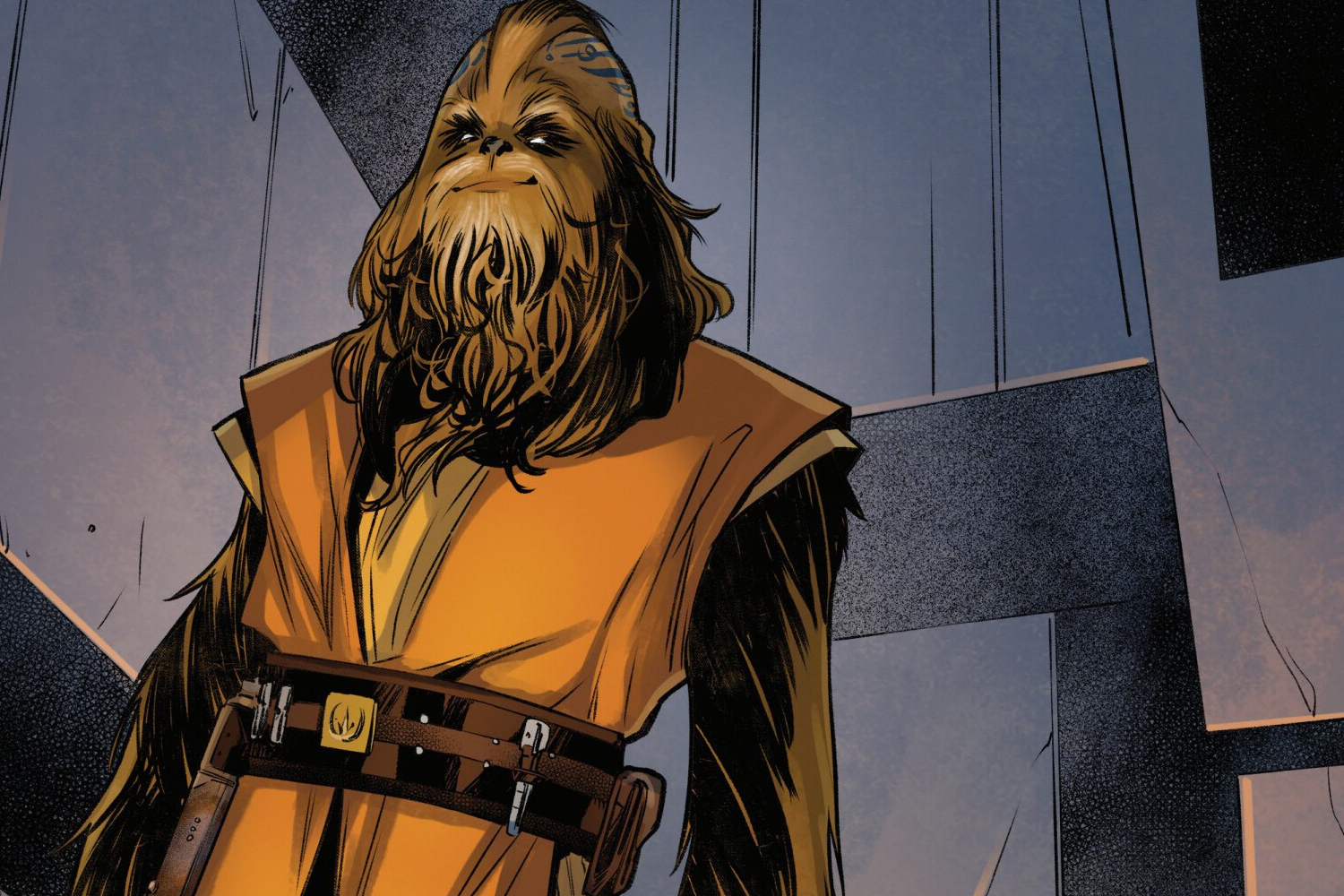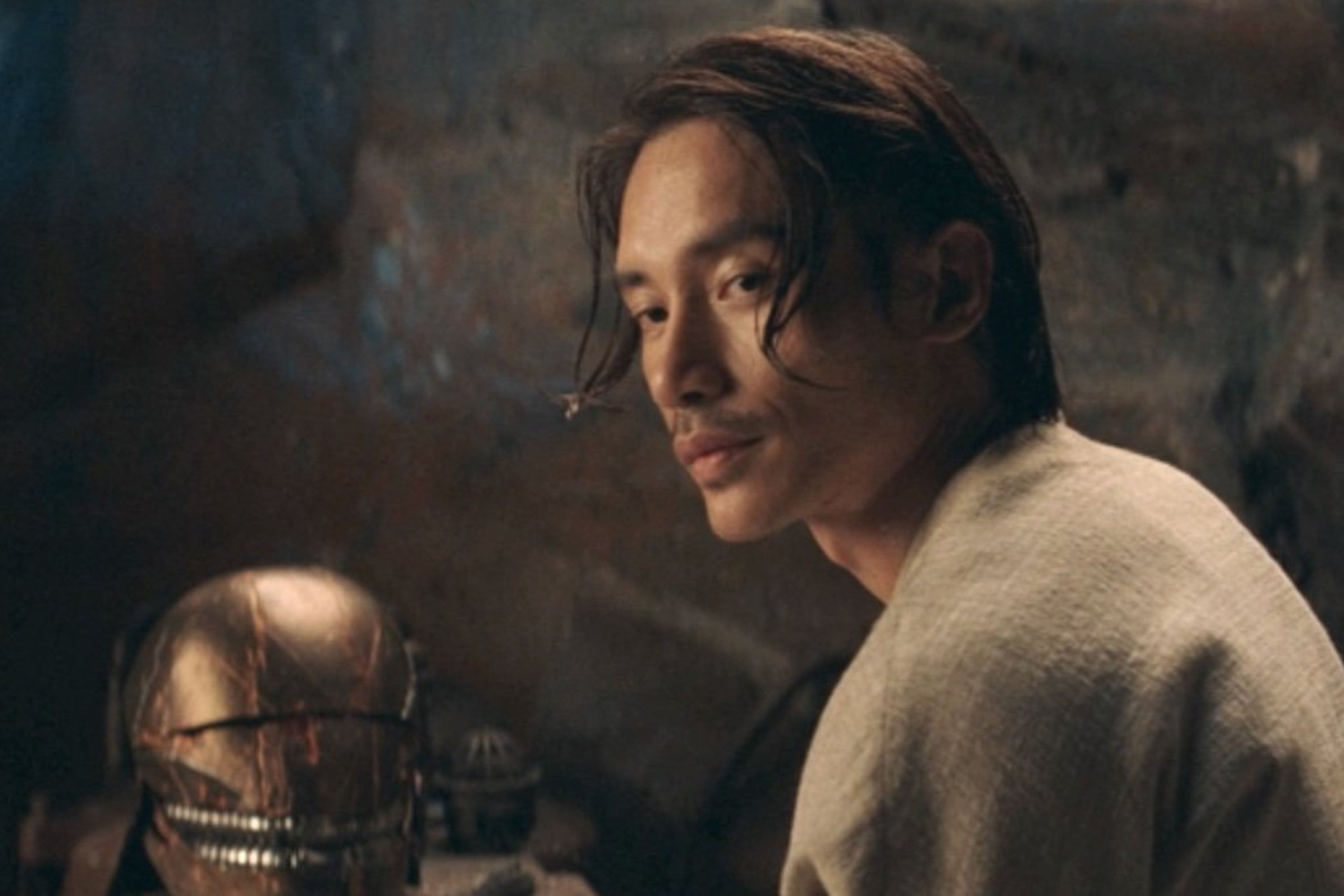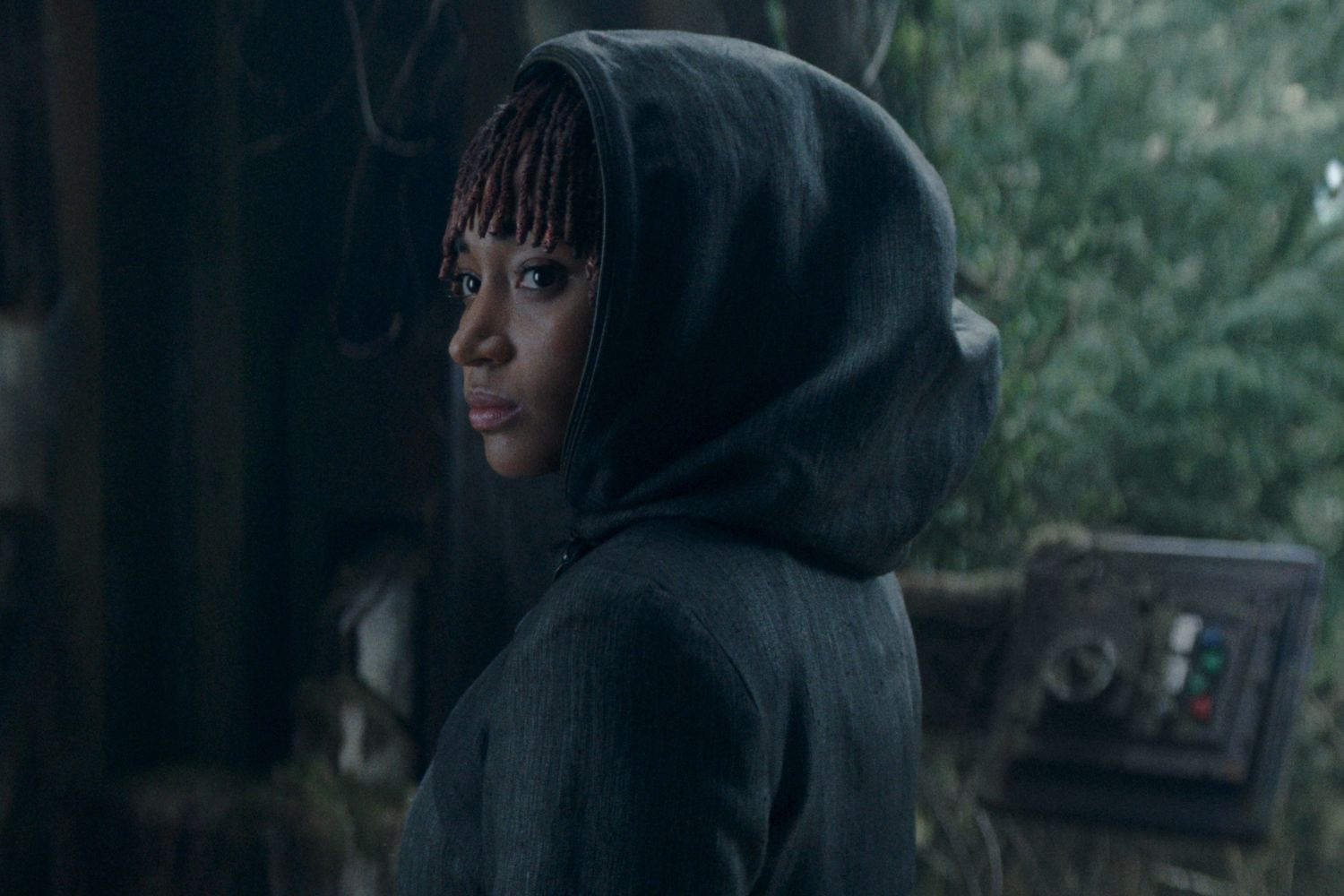The Force works in mysterious ways—manners that we don’t always understand, or even have to. Sometimes new Star Wars material uses it for things we’ve never seen it been used to do before; sometimes it draws on elements of Star Wars history from both current continuity and years of Expanded Universe content. The Acolyte gave us plenty of ideas, characters, and materials from the latter, but its season finale climaxed with a final twist that has connections in one of the most beloved tales of the old EU… and one that has some other intriguing connections across Star Wars history.

During the climax of “The Acolyte,” the self-titled season finale of The Acolyte, twin sisters Osha and Mae, as well as the dark sider known as the Stranger, find themselves attempting to flee a rapidly encroaching group of Jedi. Choosing to offer herself up as a distraction to buy her sister and the Stranger time to flee, Mae stays behind to be reprimanded into Jedi custody. But before she’s captured, in a tearful farewell, the Stranger offers to use the Force to remove all memories of Osha and himself from Mae’s mind, so she can’t be used by the Jedi to find them. It’s eventually revealed to Mae and the audience however, that it wasn’t just selective memories of Osha and the Stranger that she lost: she had lost all memory of her life from after the age of 8, from specifically the night her coven was burned down and killed during an encounter with four Jedi.
This kind of extensive mind wipe has rarely been seen in biological beings in Star Wars before (more on that “biological” aspect in a bit). But using the Force to erase someone’s memory does in fact have precedent in the franchise—both in current continuity, and with links to one of the most iconic stories of the Star Wars Expanded Universe canon, Knights of the Old Republic.
The Most Famous Memory Wipe in Star Wars History

The concept of a memory wipe, or “memory rubbing,” as it is occasionally known, as a specific Force technique has roots dating back to the original Star Wars. After all, what is the Jedi Mind Trick if not a temporary altering of a target’s memory to persuade them of a particular belief? But examples of extended, but short term memory wipes appear throughout the EU, like Luke using the force to selectively wipe the minds of a couple of Stormtroopers of his presence (for a period he describes as up to a few years) during The Courtship of Princess Leia, or Jacen Solo learning the technique from the Fallanassi during the Legacy of the Force novels.
But arguably the most famous of all memory wipes in Star Wars, even now, remains as part of the grand twist in the beloved Bioware CRPG Knights of the Old Republic. As the events of the game unfold, the player character—who has been put on a path to try and find the powerful weapons factory known as the Star Forge, formerly controlled by the missing renegade Sith Lord Darth Revan during his campaigns against the Jedi and the Republic—learns that they are in fact, Revan themselves. It turns out that prior to the beginning of the game, Revan was severely wounded during a surprise strike by a team of Jedi aboard his flagship. However, Revan was saved by the sole survivor of the assault, a Jedi named Bastila Shan, and brought back to the Jedi Council on Dantooine.
The Council decided to heal Revan, but in the process, alter their memory to have no recollection of their former life as a Jedi or as a Sith, giving them the false memories of a soldier in the Republic’s armed forces. Using Bastila’s connection in the Force to Revan, forged during the moments she saved his life during the attack on his starship, the council hoped to slowly draw out and restore Revan’s memory, leading the Republic to his former base of operations and leverage it defeat Revan’s duplicitous apprentice, Darth Malak.
Memory Wipes in Current Star Wars Canon

Before The Acolyte, memory wipes were still as relatively uncommon as they were in prior continuity, outside of one specific example that bridged both the former EU and the rebooted Star Wars canon. During the events of the Clone Wars season three trilogy of episodes “Overlords,” “Altar of Mortis,” and “Ghosts of Mortis,” Anakin Skywalker, Obi-Wan Kenobi, and Ahsoka Tano encountered a trio of ancient beings who claimed to embody the myriad aspects of the Force: the Light, represented by a being known as the Daughter; the Dark, by the Brother; and the balance of the two, by their Father. As events unfolded on the planet Mortis, Anakin was shown his future destiny as Darth Vader by the Brother in an attempt to lure him to his side, only for those memories to be erased from his mind by the Father for violating the laws of time.
Of course, we have much more evidence of a different kind of memory wipe in Star Wars: the technological process to erase the memory banks of droids. Most famously we saw this with C-3PO after the events of Revenge of the Sith, where Bail Organa has his memory banks wiped to avoid the secret of Anakin’s fall to the dark side coming to light, but in other Star Wars material it’s established that regular memory wipes for droids are common throughout the galaxy, whether for re-sale, to maintain operational security in times of war (it becomes a plot point in Clone Wars that Anakin’s refusal to wipe R2-D2’s memory leads to sensitive information falling into enemy hands), or just as part of regular routine maintenance. The fact that Star Wars has a much longer history of this process being subjected on non-organic life than it does organic life speaks to its thorny history with the idea of droid sentience—altering a person’s mind is a horrifying violation, altering a droid’s is just a given—but it is an interesting parallel, nevertheless.
How Did The Acolyte‘s Memory Wipe Work?

Interestingly, of the two main depictions of a Force-powered memory wipe we have in Star Wars—Revan’s restoration in Knights of the Old Republic, and Anakin’s wipe in Clone Wars—The Acolyte‘s example appears to be more akin to the latter than the former. In Knights of the Old Republic, Revan’s memories are not fully erased, and instead largely supplanted by ones of their new identity, and the process occurs while they are comatose after the attack on their flagship. Revan was not a conscious participant in the process, which took the abilities of the Jedi Council themselves working in unison over an extended period of time. Even with that process being as in-depth and involved as it was, Revan still experienced visions of their past resurfacing before the truth of their identity was re-revealed to them by Malak.
Clone Wars‘ and The Acolyte‘s versions are instead both expedited processes and also more blunt. The Father is a powerful being unlike any other Force user encountered in Star Wars, while the Stranger is a powerful fallen Jedi, but still significantly nowhere near the Father in terms of the scope of his abilities, and yet both perform their memory wipes relatively quickly: the Father touches Anakin’s forehead and he is immediately rendered unconscious, while Mae is still able to partially recall memories of her sister as the Stranger performs the wipe, but it’s still over in a matter of moments. Both are more akin to wiping away whole blocks of time for the being, whereas Revan’s wipe involved supplanting their actual memories with false ones as well.
There’s also a level of consent involved in Anakin and Mae’s memory wipes that wasn’t present with Revan: Mae willingly offers to have her memory wiped to the Stranger, and while Anakin does not explicitly consent to the Father’s memory wipe, Anakin does at least express a desire to unlearn what he has learned before the Father acts. Whenever the Force is used on someone else telepathically there has always been an element of participation involved, and how wilful the target’s mind is, so it would make sense if there was an element of that at play here, making the process easier or more difficult depending on whether or not the target resists.
Want more io9 news? Check out when to expect the latest Marvel, Star Wars, and Star Trek releases, what’s next for the DC Universe on film and TV, and everything you need to know about the future of Doctor Who.














